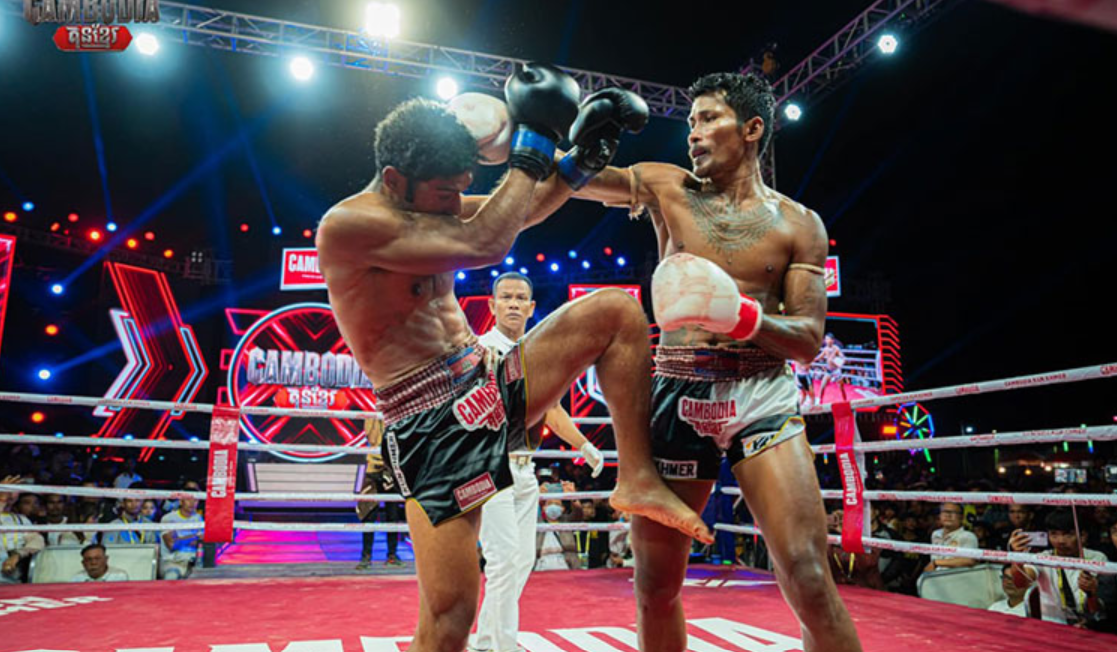Kun Khmer, or Pradal Serey, is not just a martial art but a cultural heritage of Cambodia, with its own techniques, rituals, and traditions. Here’s how you can train in Kun Khmer with a focus on its unique characteristics:
1. Cultural Immersion
- Learn the History: Understand the origins and evolution of Kun Khmer. Study the significance of this martial art in Cambodian history and its role in cultural rituals.
- Traditional Music: Familiarize yourself with the traditional Pinpeat orchestra music, often played during fights. This helps in synchronizing movements and understanding the rhythm of Kun Khmer.
2. Finding a Kun Khmer Trainer or Gym
- Cambodian Gyms: If possible, train in Cambodia to get the most authentic experience. Many gyms in Phnom Penh and other cities offer traditional Kun Khmer training.
- Local Communities: Look for Cambodian martial arts communities or cultural centers if training in Cambodia isn’t feasible.
3. Traditional Gear and Attire
- Sarong and Headband (Krama): Train wearing the traditional Cambodian krama and sarong, which instills a sense of cultural pride and authenticity.
- Pradal Serey Shorts: Use specific Kun Khmer shorts, often more elaborately designed than regular Muay Thai shorts.
4. Unique Conditioning Techniques
- Palm Tree Climbing: Incorporate palm tree climbing for strength and agility, a traditional conditioning method in Cambodian villages.
- Sandbag Lifting: Use sandbags instead of standard weights to build functional strength and simulate traditional training environments.
5. Specialized Techniques
- Distinctive Elbow Strikes: Focus on the unique elbow strikes of Kun Khmer, which differ slightly in execution and application from those in Muay Thai.
- Clinch Work: Develop mastery in the Kun Khmer clinch, emphasizing control, off-balancing techniques, and close-range strikes.
- Leg Sweeps: Practice leg sweeps and throws, integral to Kun Khmer, adding a grappling dimension to the striking art.
6. Rituals and Traditions
- Wai Khru Ram Muay: Learn and perform the traditional pre-fight ritual dance, which shows respect to trainers, opponents, and the spirit of Kun Khmer.
- Blessing Ceremony: Participate in or observe blessing ceremonies where monks bless fighters for protection and success.
7. Training Regimen
- Daily Routine: Follow a structured daily training routine similar to traditional Cambodian fighters, including early morning runs, shadowboxing, pad work, and sparring.
- Rural Training Methods: Engage in rural training methods such as running on dirt roads, training in open fields, and using makeshift equipment.
8. Sparring with Traditional Rules
- Kun Khmer Rules: Spar using traditional Kun Khmer rules, which may differ slightly from modern kickboxing or Muay Thai regulations, to get accustomed to the specific scoring and fighting style.
9. Mental and Spiritual Preparation
- Meditation: Practice meditation to build mental resilience, a common practice among traditional Kun Khmer fighters.
- Visualization: Visualize ancient warriors and their battles, connecting mentally with the long lineage of Kun Khmer practitioners.
10. Community and Cultural Respect
- Engage with Practitioners: Build relationships with Cambodian fighters and trainers, learning from their experiences and stories.
- Promote Kun Khmer: Advocate for and promote Kun Khmer in your local community, helping to preserve and spread this ancient art.
By immersing yourself in the unique aspects of Kun Khmer, from its cultural roots to its distinctive techniques, you can truly appreciate and excel in this traditional martial art. This approach not only builds physical prowess but also fosters a deep connection to the rich heritage of Cambodia.

